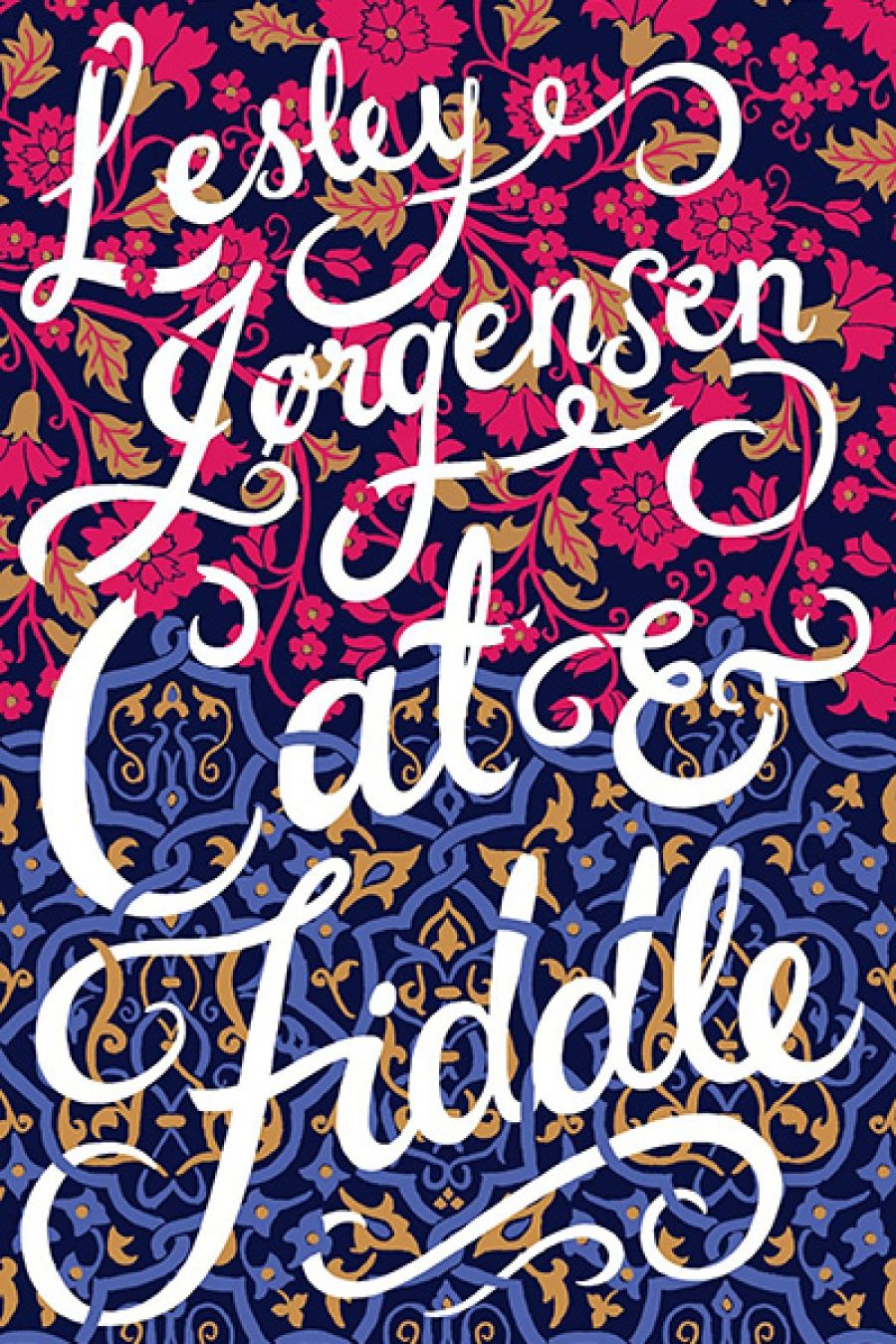
- Free Article: No
- Contents Category: Fiction
- Review Article: Yes
- Online Only: No
- Custom Highlight Text:
Oh please, not another novel that draws from Pride and Prejudice! That was my first thought when I read the media release that came with Cat & Fiddle. Last year I had been underwhelmed by both P.D. James’s Death Comes to Pemberley and Jennifer Paynter’s Mary Bennet, a novel about ‘the forgotten sister’, and I was now fervently wishing that all the sisters could be forgotten, at least by novelists. But I soon forgave Lesley Jørgensen. Her début novel, which won the 2011 CAL Scribe Fiction Prize for an unpublished manuscript, is a warm, funny, good-natured, big-hearted, cross-cultural family saga that many female readers will enjoy. (It is a truth universally acknowledged that men are not much interested in novels about matchmaking, wooing, and marriage, particularly those with pink and gold covers.)
- Book 1 Title: Cat & Fiddle
- Book 1 Biblio: Scribe, $29.99 pb, 512 pp, 9781921844720
We are first introduced to the Choudhurys, Bangladeshi immigrants who have done well in their adopted country, England. Dr Choudhury, Oxford educated and a Rhodes Scholar, is now professor of historical architecture, albeit a mostly absent member of faculty. Like Mr Bennet, he has married a pretty woman who is well beneath him intellectually, but Mrs Begum (Muslim wives keep their own family name) outstrips him when it comes to worldly wisdom. They have three adult children, none married, and none as obedient to Muslim traditions as their parents would like. The son, Tariq, has come home, a lapsed fundamentalist, after two years of army training in Libya, with some serious identity problems. Both daughters live in London. Rohimun, a once-successful portrait painter, has not lifted a brush for a year or more and is ‘ruined for marriage’ because a paparazzi photograph of her with a group of men has appeared in a newspaper. The slightly disreputable younger sister, Shunduri, the pretty favourite of her mother and nicknamed Baby, spends her money on designer fashion and make-up, and hangs around with Kareem, a ‘businessman’ from Brick Lane who sells mobile-phone plans and peddles drugs on the side. Mrs Begum accidentally finds his large stash of opium and buries it in her compost heap, not the wisest move.
The other family is the Bournes, the owners of Bourne Abbey. Richard, the eldest Bourne son, single and a successful London lawyer, has given away his hereditary rights to his younger brother Henry, who has had the good sense to marry Thea, a Greek heiress. With seemingly unlimited funds, restoration work is being carried out on the Abbey under the supervision of Dr Choudhury.
The fact that the Choudhurys live in Windsor Cottage, just a few minutes away from the Abbey, ensures that the two families will, in various ways, get to know each other. So will we, from the viewpoint of at least eight different characters, as the narrative switches back and forth. This is usually a risky venture, but Jørgensen handles it skilfully and with humour, often giving us different perspectives of the same scene. This is shown at its best during a rather disastrous dinner party Thea hosts, a great set piece that should translate splendidly to film. The differing viewpoints also mean that we get to know each character intimately, with all their vanities, flaws, and weaknesses. It doesn’t make for sharp satire, but it makes the characters human and vulnerable, and often very funny; I particularly liked Audrey, the stroppy char from the village, who mutters about ‘this furrin’ muck’ when asked by Thea to prepare a salmon terrine, and Tariq, trapped and outsmarted by his mother: ‘If she’d been head of Jamar-al-Islami, the US would be under Sharia law by now.’
As the tensions between the two cultures increase, some archaeology students who are excavating at the Abbey make a spectacular find. I would tell you what it is because it is clearly meant to symbolise what Cat & Fiddle is all about, but that would be a spoiler and, moreover, one that I couldn’t quite buy. Too romantic, too unlikely, too convenient; Jørgensen has a lot of balls in the air at the end of this very long novel, and this is one that got away from her.
As for the meaning of the title, Cat & Fiddle, the author has it that, used as a pub sign, it is a corruption of ‘Catholic and Infidel’, which suits her story nicely. However, I couldn’t find a source that agreed with her. Brewer’s Dictionary of Phrase and Fable says that Cat and Fiddle is a corruption of Caton le Fidèle, and refers to Caton, a certain governor of Calais. William Greaves, author of It’s My Round: A Personal Celebration of 2,000 Years of the British Pub (2012), states categorically that every pub called the Cat and Fiddle owes its name to Catherine la Fidèle, Catherine of Aragon, the first wife of Henry VIII. I’d put my money on that, given that Edward I’s first queen, the Infanta de Castille, has been immortalised as the Elephant and Castle.


Comments powered by CComment